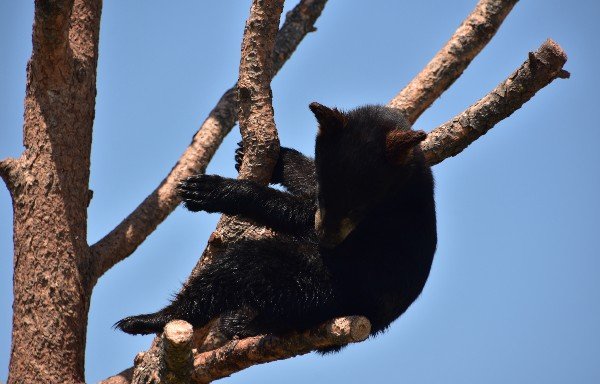It is important that while you observe and enjoy wildlife in Yellowstone that you take the necessary precautions to keep you and anyone else with you safe. This includes not disturbing the wildlife and keeping a good distance from them, which distance often depends on the species you are observing. Generally, you can stand up to 25 yards from bison, moose, coyotes, and elk safely. Other animals, like bears and wolves, should be observed from a distance of 100 yards or more.
Visitors have the opportunity to see bears in Yellowstone in their natural habitats, which can be a breathtaking, transformative experience. But to protect yourself, other park visitors, and the animals, it is critical that you observe them safely.
Safety Guidelines to Follow with Wild Animals
It is important to follow certain safety guidelines any time you are in an area with wild animals. It can be tempting to get close to a wild animal to get a great photo, but no photograph is worth a potential injury. Remember some of the following guidelines when it comes to interacting with animals in Yellowstone:
- Calling to wild animals to get their attention is illegal.
- Do not interact with wild animals. This is true of all species, even seemingly docile animals like elk and moose and small animals like rabbits. Large herbivores can become frightened or stressed and attack a human in self-defense. Small animals can bite and scratch in self-defense, which can spread diseases like rabies. Close contact with any wild animal also puts you at risk of being infested by parasites like ticks.
- Do not feed wild animals either. This is true for all species. Wild animals are part of a complex ecosystem, and when you expose them to human food, you not only damage the ecosystem, you can cause the animal to become ill. Feeding wild animals damages ecosystems because when the animals expect food from human visitors, they abandon their natural instincts and food sources, altering nature’s checks and balances and negatively impacting other species in the park.
- If an animal begs for food, ignore it.
Keeping a Safe Distance from Bears
Take special precaution when you are in areas of the park inhabited by bears. You are required to keep all food and garbage in bear-safe containers when you are in these areas.
If you see a bear in Yellowstone, do not approach it. Do not run, either – this can trigger the bear to chase you. Rather, slowly back away from the bear to give both of you ample space to leave the scene. If you cannot get away from a bear safely and it comes close, use pepper spray or bear spray to defend yourself from an attack. Treat all bear interactions the same way; a bear of any species can seriously injure or kill you.
See Wild Animals Safely in their Natural Habitats at Yellowstone Bear World
While it is generally important to avoid close-upinteractions with bears throughout other parts of Yellowstone, Bear world gives you an opportunities to see bears much closer and safer. We offer opportunities to bottle feed baby bears, excursions to see bears and other wildlife at a much closer distance, and much more. We provide the safest, most informational way for you and your family to come face-to-face with wild animals at Yellowstone is in Yellowstone Bear World. At Yellowstone Bear World, you can even view animals in their natural habitats from the safety of your own vehicle. Contact us today to learn more about our admission price and hours of operation.






